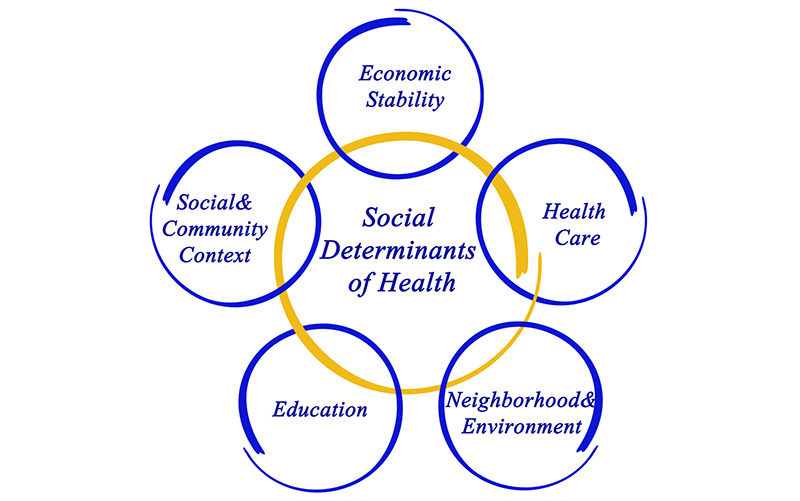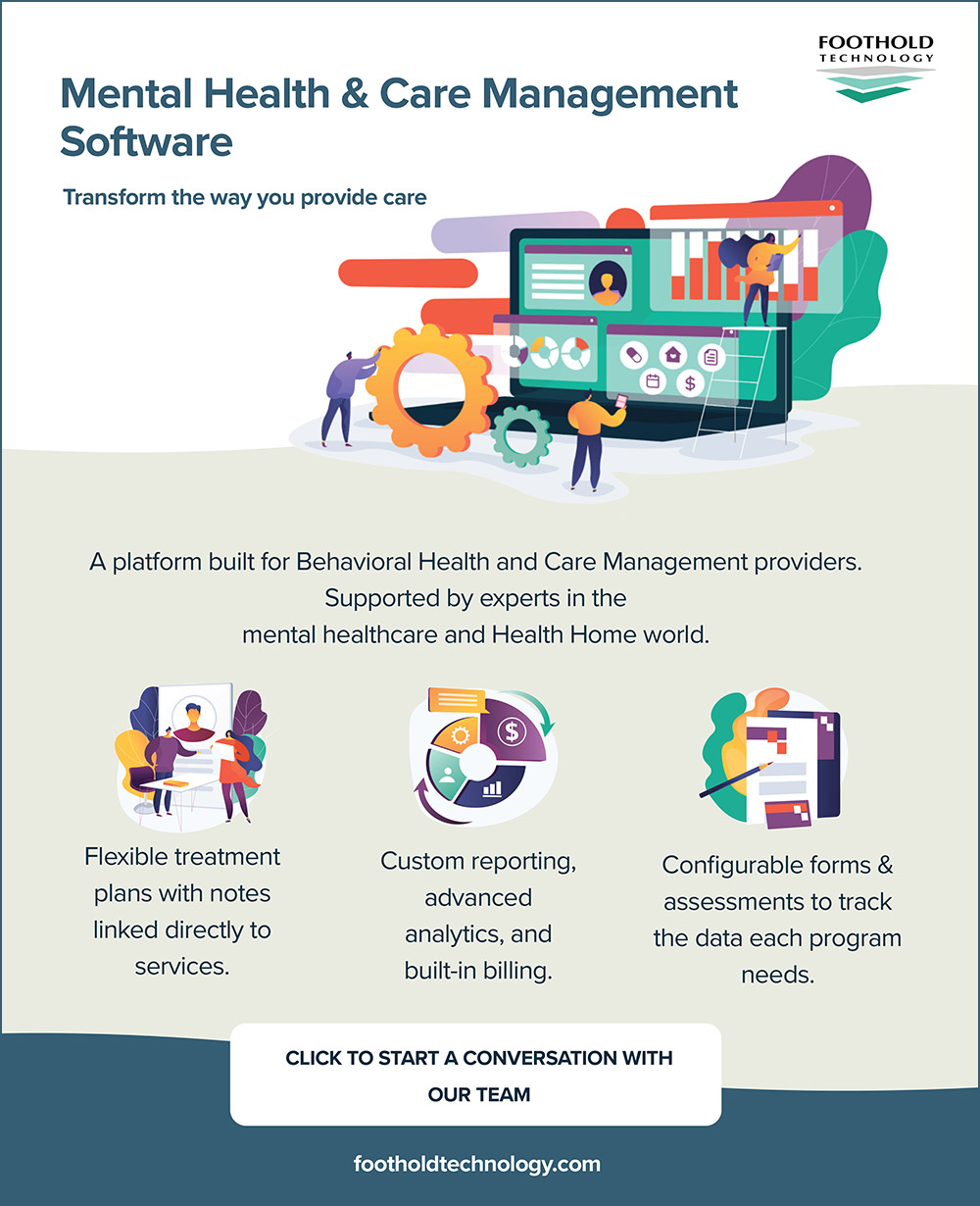This is the time to use technology to overcome the barriers in integrating social determinants of health (SdoH) information into healthcare but ensuring that infrastructure and standardization is in place will be a joint effort.

If one were to think about individual health, you might think of the incredible advances in medicine that we have seen in the past 30 years. You could think about the use of new technologies that were only a dream 30 years ago. You might also think that an annual physical is the key to a person’s health. Although all of these are important advances in medical care, they are only a very small part of the story. Medical care accounts for only 10%-20% of modifiable contributors to health outcomes for populations in the US (Magnan, 2017). You may wonder, how is this possible? The answer comes in the correlation between patient outcomes and social determinants of health.
Defining Social Determinants of Health
To better understand the influence of SDoH, it is important to understand what they are. The World Health Organization defines social determinants as “the conditions in which people are born, grow, work, live and age, and the wider set of forces and systems shaping the conditions of daily life.” Social determinants are non-medical factors that impact a person’s health.
There are numerous ways to categorize social determinants. The CDC identifies 5 categories of social determinants: Economic Stability, Education Access and Quality, Health Care Access and Quality, Neighborhood and Built Environment, and Social and Community Context. On the other hand, the Public Health Agency of Canada has identified 12 determinants of health as follows: Income and social status, Social support networks, Education and literacy, Employment/working conditions, Social environments, Physical environments, Personal health practices and coping skills, Healthy child development, Biology and genetic endowment, Health services, Gender, and Culture (2020).
Whatever definition we use, it is important to understand that there are a set or range of factors that are major influencers on the health status of individuals and populations. Regardless of one’s age, there are complex interactions between social and economic factors, as well as between physical environment and individual behaviors. These factors and interactions come together to influence one’s health.
For those in the behavioral health world, social determinants of health have always been at the center of the work that these providers do. They have developed community-based programs that address inequities and help people work, learn, and thrive in the community. For most behavioral health programs, social determinants have been at the core of recovery and rehabilitation for many years.
In recent years, there has been a growing recognition of the importance of social determinants. There have been some focused, while limited, efforts to address this critical component of the healthcare system. Through COVID-19 we have gained knowledge about social determinants that has helped to highlight the disparities in our healthcare system, which come as a result of racial, gender, and economic inequalities. However, for the most part, social determinants have not been as deeply integrated into medical care when compared to the behavioral health sector.
Integrating Social Determinants Data Into Healthcare
As an industry, how can we be even more successful in identifying and incorporating these factors into healthcare treatment? I believe there are three factors that will help us integrate social determinants into healthcare: identification, access, and action.
- Identification
It starts with identification. Identifying social determinants is not as simple as “just ask the person.” Often, this information is not disclosed by an individual during a healthcare visit or during urgent care treatment. Even as social determinants have become more widely recognized as critical to an individual’s health, the healthcare system as it’s currently configured is not set up to fully identify an individual’s comprehensive array of social determinants. What’s more, clinical settings and reimbursement systems are not designed to identify and account for these factors. While there are pockets of successful efforts to integrate social determinants into the healthcare system, the system as a whole is still struggling to address social determinants.
- Access
Access to social determinant information has been an ongoing issue. When thinking about the value of information, it is important to look at standardization, accessibility, and usability. Projects such as the Gravity Project have made great progress in creating standardized nomenclature and coding for many of the social determinants. Including social determinants as part of the latest USCDI dataset provides an avenue for interoperability and sharing of this information. Beyond having this information standardized, we need to ensure that this information is readily available in a provider’s workflow. Since providers at all levels of care are struggling to keep up with their workloads, systems must be designed to make social determinants data easy to access and utilize in clinical decision making.
- Action
Last, but not least, action must be taken to successfully infuse SDoH information into healthcare. Most clinical settings and reimbursement systems are not designed to address these issues. The simple answer is to refer individuals to a program that can address social determinants. However, in practice, this is not as simple as it sounds. Again, being able to create a replicable workflow and reimbursement structure that allows for care coordination and follow-up is crucial. Being able to easily communicate between a referring practice and the service delivery agency is critical to minimize workflow disruption and improve referral success.
It’s time for action. This is the time to use technology to overcome the barriers in integrating SDoH information into healthcare, in the same way that electronic lab or testing information is readily shared and utilized. It is also a time for creativity and community support in improving access to behavioral health resources and building up those resources.
Ensuring that infrastructure and standardization is in place for providers to efficiently collect, share, and analyze social determinants of health data will be a joint effort between government, industry organizations, and the private sector. But the benefits of making this data accessible are real and the opportunity is endless. This information placed in the hands of those who truly can make a difference would drastically improve individual and population health. It can help shed light on inequities in healthcare, enable better clinical decisions, and support predictive analysis. This is an opportunity for technology to make a difference and to help create a healthier world.
David Bucciferro is Special Advisor, Foothold Technology and Vice-Chair, Electronic Health Record Association. Foothold Technology offers behavioral health and Care Management software platforms to transform the way you care. We are a human services EHR company with deep roots in the behavioral healthcare world.
References
Magnan, S. (2017, October 9). Social Determinants of Health 101 for Health Care: Five Plus Five. National Academy of Medicine. https://nam.edu/social-determinants-of-health-101-for-health-care-five-plus-five/
Public Health Agency of Canada. (2020). Social determinants of health and health inequalities. Public Health Agency of Canada. https://www.canada.ca/en/public-health/services/health-promotion/population-health/what-determines-health.html
World Health Organization. Social Determinants of Health. World Health Organization. https://www.who.int/health-topics/social-determinants-of-health#tab=tab_1








